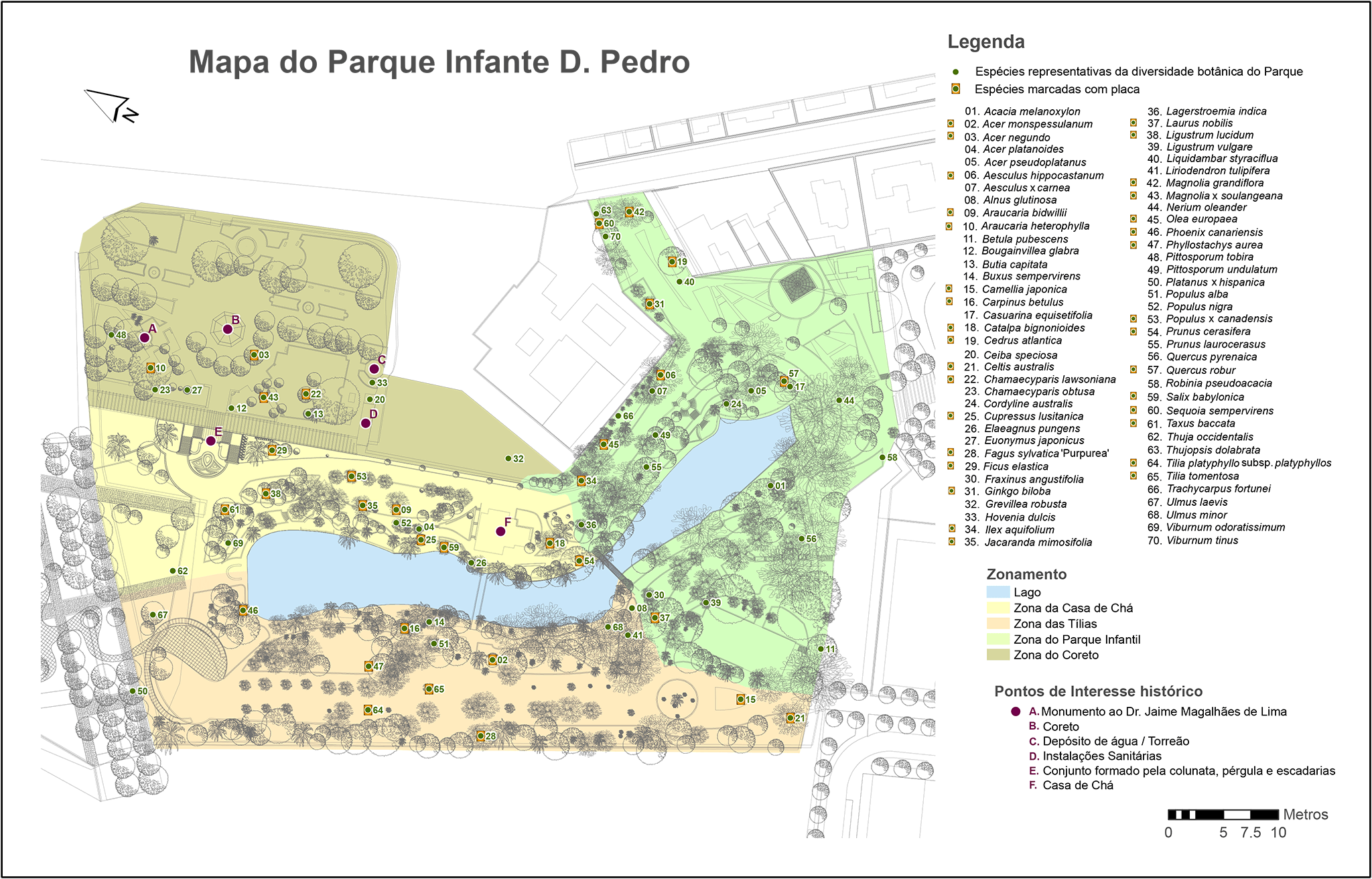Infante D. Pedro’s Park
Short historical overview
In 1861, the President of the Municipality of Aveiro, Firmino Maia, decided to transform into a “Public Walk” the “Campo de Santo António” [Saint Antony’s Field]. This Field was part of the old “cerca” [wall] of the Convent of Santo António, that is, the lands that surrounded the convent and were cultivated by the monks. The remainder of the land had been sold to the first viscount of Santo António, Pedro António Rebocho, in 1842. With its tree-lined walk and well-composed and flourishing flowerbeds, the Public Walk was considered one of the first and best gardens in Portugal.
The “Public Garden” was renewed and expanded when Dr. Lourenço Peixinho was president of the Municipality. In 1919, he bought the Garden’s adjacent lands, the “Quinta de Santo António” [Saint Antony’s Farm] or “Quinta do ti Germano” [Uncle Germano's farm], that belonged to Jacinto Agapito Rebocho. The construction works dragged on for nearly a decade, with the Park being inaugurated with a big party, in 1927. It started by having a colonnade, like a pergola, connected to a double staircase and artificial grotto, which link the high and low zones of the Park. It is also from this time the beautiful Tea House, with its small library and ample terrace overlooking the lake.
Later, at one of the ends of Avenida das Tílias [Linden Trees Avenue] (between the lake and the Hospital), the Park had a circular cage and a rectangular one with birds and monkeys, a fact that may have motivated the name by which the Park is popularly known: "Parque da Macaca" [Monkey’s Park]. Currently, the Park connects in the northwest to the Baixa de Santo António [Saint Antony’s Downtown] by means of a pedestrian iron bridge, and in the southeast to the Parque dos Amores [Loves’ Park] or of Mário Duarte, forming a single green lung for the city.
Map

















